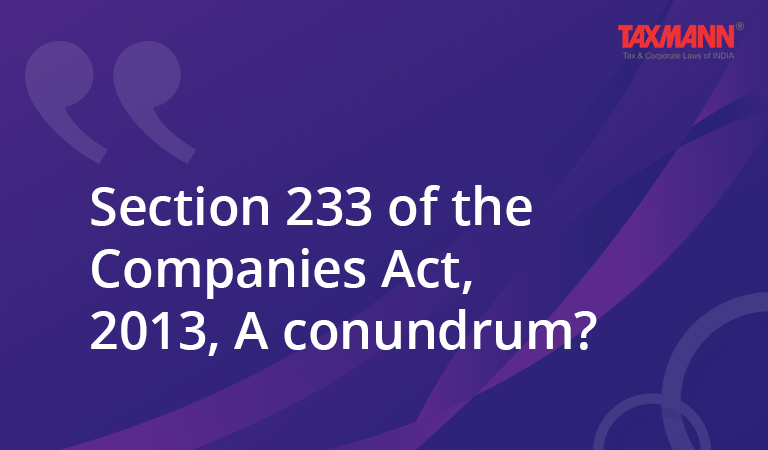Section 233 of the Companies Act, 2013, A conundrum?
- Blog|News|Company Law|
- < 1 minute
- By Taxmann
- |
- Last Updated on 6 December, 2021

[2021] 133 taxmann.com 29 (Article)
In light of the recent changes in the Indian economy, the instances of corporate restructuring have amplified. The authors in this write up have made an attempt to analyse the intricacies of one such restructuring, viz. fast-track merger1 provided under section 233 of the Companies Act, 2013 (“Act”).
Section 233 of the Act entails the concept offast-track merger procedure which may be opted by a defined set of companies. The said Section has its own benefits which makes it a lucrative approach for the entities to undergo this route.
What is a fast-track merger?
Fast track merger as the name suggests, is an alternate and swifter route to restructure companies, however, not every kind of entity can undergo the said route. The following entities are eligible to undergo this method –
(a) Two or more small companies;
(b) Holding and its wholly owned subsidiary;
(c) Two or more start-up companies and
(d) One or more start-up company with one or more small company.
The process is a respite from the lengthy approach laid in Section 230-232 of the Act, viz, the NCLT route.
Click Here To Read The Full Article
Disclaimer: The content/information published on the website is only for general information of the user and shall not be construed as legal advice. While the Taxmann has exercised reasonable efforts to ensure the veracity of information/content published, Taxmann shall be under no liability in any manner whatsoever for incorrect information, if any.

Taxmann Publications has a dedicated in-house Research & Editorial Team. This team consists of a team of Chartered Accountants, Company Secretaries, and Lawyers. This team works under the guidance and supervision of editor-in-chief Mr Rakesh Bhargava.
The Research and Editorial Team is responsible for developing reliable and accurate content for the readers. The team follows the six-sigma approach to achieve the benchmark of zero error in its publications and research platforms. The team ensures that the following publication guidelines are thoroughly followed while developing the content:
- The statutory material is obtained only from the authorized and reliable sources
- All the latest developments in the judicial and legislative fields are covered
- Prepare the analytical write-ups on current, controversial, and important issues to help the readers to understand the concept and its implications
- Every content published by Taxmann is complete, accurate and lucid
- All evidence-based statements are supported with proper reference to Section, Circular No., Notification No. or citations
- The golden rules of grammar, style and consistency are thoroughly followed
- Font and size that’s easy to read and remain consistent across all imprint and digital publications are applied



 CA | CS | CMA
CA | CS | CMA
